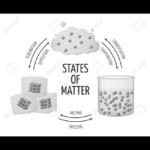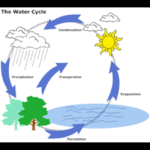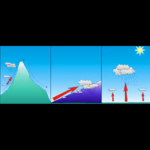Gr 10 Geography Term 1 Moisture in the Atmosphere, Precipitation, Clouds and Synoptic Weather Maps
R115.00
Use, by you or one client, in a single end product which end users are not charged for. The total price includes the item price and a buyer fee.
Resource Description
utlines a comprehensive Grade 10 lesson plan titled “Moisture in the Atmosphere.” This lesson plan aims to educate students about fundamental concepts related to moisture in the atmosphere, including the water cycle, evaporation, condensation, humidity, and cloud formation. The main details of the lesson plan are as follows:
Lesson Title: Moisture in the Atmosphere Grade Level: 10 Duration: Six 45-minute periods Class Size: Approximately 40 students Objective: Students will understand the fundamental concepts related to moisture in the atmosphere, including the water cycle, evaporation, condensation, humidity, and cloud formation. They will also recognize the significance of these processes in shaping Earth’s climate and ecosystems.
Materials:
- Whiteboard and markers
- Visual aids (diagrams, images, videos)
- Hygrometers (if available)
- Access to weather-related websites or apps
The lesson is divided into six periods, each focusing on a specific aspect of moisture in the atmosphere:
Period 1: Introduction to Moisture in the Atmosphere (45 minutes)
- Engagement: Start with a thought-provoking question about the importance of water for life on Earth.
- Exploration: Provide an overview of moisture in the atmosphere, emphasizing the water cycle.
- Activity: Divide students into small groups to analyze the water cycle diagram.
Period 2: Evaporation and Condensation (45 minutes)
- Engagement: Begin with a question about puddles disappearing on sunny days.
- Exploration: Explain evaporation and condensation concepts, including natural and human-induced factors.
- Activity: Conduct a hands-on experiment demonstrating evaporation.
Period 3: Humidity and Its Impact (45 minutes)
- Engagement: Ask students about how humidity affects their daily lives.
- Exploration: Define humidity and discuss its influence on human comfort.
- Activity: If hygrometers are available, allow students to measure indoor humidity levels.
Period 4: Dew Point and Weather Prediction (45 minutes)
- Engagement: Show images or videos of foggy mornings or dew-covered surfaces.
- Exploration: Define the concept of the dew point and its role in weather prediction.
- Activity: Provide students with weather data to analyze and make predictions based on the dew point.
Period 5: Cloud Formation and Types (45 minutes)
- Engagement: Show images of different cloud types and ask students to describe them.
- Exploration: Explain how clouds form through condensation and describe common cloud types.
- Activity: Show pictures of various cloud formations and have students identify and classify them.
Period 6: Clouds and Climate (45 minutes)
- Engagement: Start with a question about how clouds influence Earth’s surface temperature.
- Exploration: Explain how cloud cover influences climate by reflecting or trapping heat.
- Activity: Engage students in a discussion about the role of clouds in climate change mitigation and adaptation.



 KES(KSh)
KES(KSh) USD($)
USD($) GBP(£)
GBP(£) GHS(₵)
GHS(₵) NGN(₦)
NGN(₦) MUR(₨)
MUR(₨) BWP(P)
BWP(P) AUD($)
AUD($) TZS(Sh)
TZS(Sh) INR(₹)
INR(₹) PHP(₱)
PHP(₱) AED(د.إ)
AED(د.إ)











